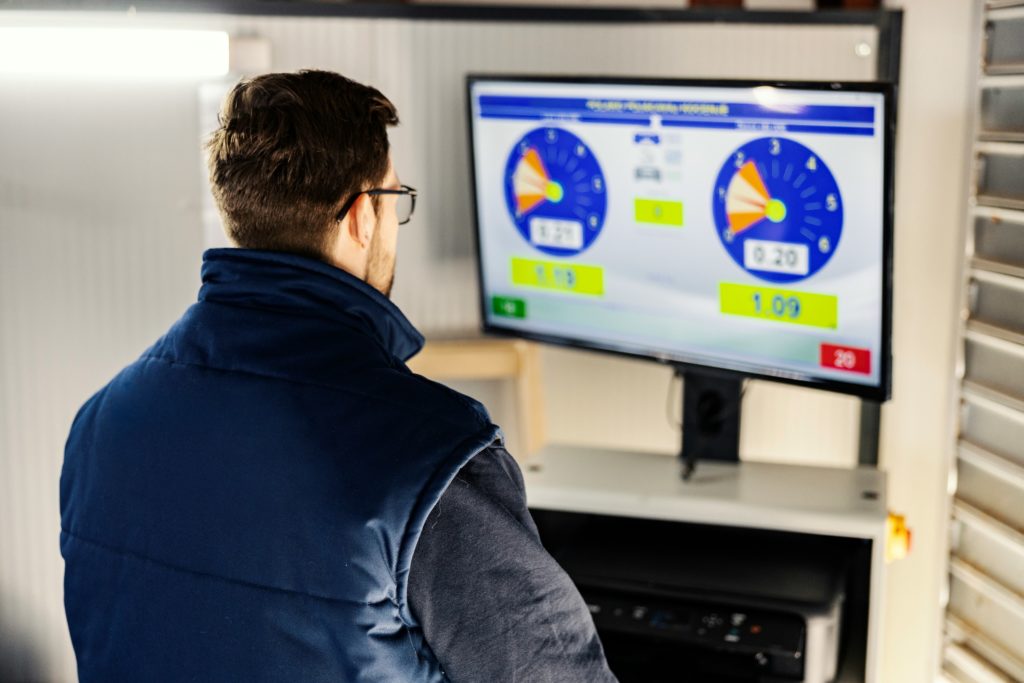In 2024, machine performance monitoring has become crucial for industrial companies in their quest for efficiency and competitiveness. With technological advances, it is now possible to collect and analyze data in real time for complete visibility of equipment operation. This article explores why this monitoring has become a strategic priority for optimizing production, reducing costs, improving safety, and decision making.
The benefits of an industrial data collection and processing solution
Companies now have access to data collection solutions that enable finer management and optimization of machinery. These systems harness data from equipment such as numerical controls (CNCs), programmable logic controllers (PLCs) and connected objects (IoTs) from various brands. The data collected provides an overview of performance in real time, helping to improve productivity, quality and operational safety.
- Data collection: thanks to connectors, companies can extract information from CNCs, drives, PLCs and IoT objects, using protocols such as OPC-UA, Modbus TCP and MQTT. This data provides traceability and an overview of machine performance.
- Dashboard visualization: Data is historized and displayed in dashboards, making it easy to visualize machine status and track key performance indicators (such as Synthetic Efficiency Rate, SER, and Overall Efficiency Rate, OER).
- Incident management: The digitization of incident recording enables automated management of anomalies and a reduction in human error, thus offering greater responsiveness to problems.
The benefits of machine performance monitoring
1. Optimizing productivity
Real-time monitoring improves efficiency by enabling anomalies to be detected early and reacted to before they affect production. Data collection helps to adjust production lines and maximize yield, minimizing unplanned downtime.
2. Cost reduction
Constant machine monitoring facilitates predictive maintenance, reducing repair and replacement costs. By limiting unplanned downtime and optimizing energy efficiency, companies can avoid costly production losses.
3. Quality improvement
Performance monitoring helps maintain a constant level of quality. Quality deviations are quickly detected, and the data collected enables the causes of defects to be identified and corrected in good time. This ensures greater consistency in manufacturing processes.
4. Increased safety
Machine monitoring enhances safety by identifying abnormal operating conditions that may present risks. Real-time alerts enable rapid intervention, and trend analysis helps anticipate potential safety risks.
5. Informed decision-making
Monitoring systems give decision-makers real-time visibility of equipment status. Historical data can be used to analyze trends and make more accurate decisions to improve performance.
The impact of industrial surveillance
Industrial monitoring helps reduce accidents by promoting a proactive approach to safety and optimizing maintenance processes.
- Early detection of anomalies: Sensors continuously monitor critical parameters (temperature, pressure, vibration) and trigger alerts in the event of anomalies, enabling rapid intervention.
- Predictive maintenance: Analysis of monitoring data anticipates potential breakdowns, limiting the risk of accidents due to faulty equipment.
- Improved safety procedures: Data collected is analyzed to optimize safety protocols and adapt staff training to actual risks.
- Rapid intervention in the event of an incident: In the event of a problem, real-time alerts enable the source of the problem to be quickly identified and an effective response taken.
The economic benefits of machine monitoring
The implementation of industrial monitoring offers significant economic benefits:
- Reduced maintenance costs: Thanks to predictive maintenance, interventions can be planned to avoid costly breakdowns and extend equipment life.
- Energy savings: By monitoring energy consumption, companies can identify wastage and optimize the use of resources.
- Reduced labor costs: Remote monitoring reduces the need for on-site visits and enables certain tasks to be automated, freeing up time for other strategic activities.
- Improved quality: By detecting deviations early on, monitoring helps maintain a consistent level of quality, reducing scrap and raw material losses.
- Accident prevention: Detecting unsafe conditions reduces accident-related costs, avoiding production stoppages and unscheduled repairs.
Conclusion
In 2024, machine performance monitoring has become indispensable for any industrial company wishing to optimize its operations. This proactive monitoring increases productivity, reduces costs, enhances safety, and improves decision-making. In an increasingly competitive environment, this practice is a major strategic asset for maintaining a competitive edge and ensuring the company’s long-term future.





